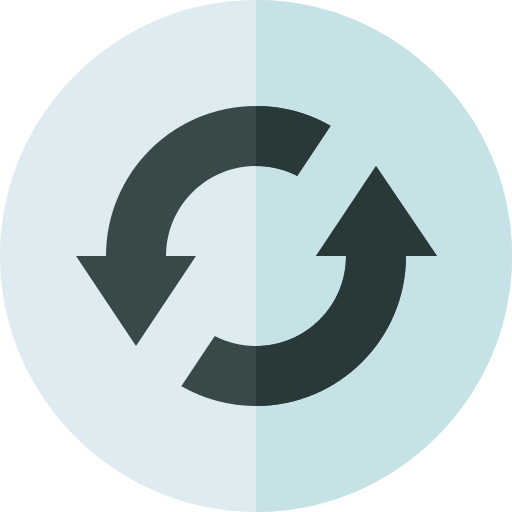How to improve your Linkedin profile to find a new job
In today's competitive job market, having a strong online presence is crucial for standing out from the crowd. And when it comes to professional networking, LinkedIn is the go-to platform for recruiters and job seekers alike.
With over 700 million members worldwide, LinkedIn offers a vast pool of opportunities to connect with industry professionals, showcase your skills, and ultimately land your dream job.
But how can you ensure that your LinkedIn profile effectively represents your professional brand?
In this article, we'll explore the key elements of a powerful LinkedIn profile and share valuable tips on how to optimize it to enhance your job search success.
Understanding the Importance of a Strong LinkedIn Profile
Before diving into the nitty-gritty of profile optimization, let's take a moment to emphasize the significance of a strong LinkedIn presence in today's job market. Gone are the days when a simple resume and cover letter were sufficient to secure employment.
Recruiters and hiring managers often turn to LinkedIn to vet potential candidates, assess their qualifications, and gain insight into their professional background. Your LinkedIn profile serves as an extended resume, providing a comprehensive view of your skills, experience, and accomplishments.
So, investing time and effort into creating a compelling profile is crucial for boosting your chances of landing that desirable job opportunity.
When it comes to job hunting, LinkedIn has become an indispensable tool. With over 740 million users worldwide, it has revolutionized the way people search for jobs and connect with professionals in their industry.
The platform offers a myriad of features that facilitate job hunting, such as job postings, networking opportunities, and industry-specific groups. By utilizing these features effectively, you can greatly enhance your chances of finding the right job.
One of the key advantages of LinkedIn is its ability to showcase your skills and experience to a wide audience. Unlike a traditional resume, which is limited to a single page, your LinkedIn profile allows you to provide a more comprehensive view of your professional background. You can highlight your achievements, share examples of your work, and even receive endorsements from colleagues and clients.
Even if you don't intend to share your LinkedIn profile with recruiters, they can still discover your LinkedIn profile using your email address. Therefore, it's always advisable to optimize your LinkedIn profile
The Role of LinkedIn in Job Hunting
LinkedIn has transformed the way recruiters and job seekers interact. In the past, job seekers would rely on job boards and career fairs to find employment opportunities.
However, with the advent of LinkedIn, the process has become much more streamlined and efficient.
Recruiters and hiring managers now have access to a vast pool of talent at their fingertips. They can search for candidates based on specific criteria, such as skills, experience, and location. This means that even if you're not actively looking for a job, having a strong LinkedIn profile can still attract attention from potential employers.
Furthermore, LinkedIn allows you to build a professional network that extends beyond your immediate circle. You can connect with colleagues, industry leaders, and even potential mentors. These connections can open doors to new opportunities, whether it's a job referral, a collaboration, or valuable industry insights.
Key Elements of a Professional LinkedIn Profile
Now that you understand the importance of a strong LinkedIn profile, let's delve into the key elements that make up a stellar professional presence on the platform.
First and foremost, your profile picture plays a crucial role in making a positive first impression. Choose a professional-looking photo where you appear approachable and confident. Avoid using selfies or casual pictures, as they may not convey the right level of professionalism. To make sure your LinkedIn profile picture looks crisp and properly sized, an image extender can help enhance and adjust it without losing quality.
In addition to your profile picture, your headline is another important element that can grab the attention of recruiters and potential connections. Use this space to showcase your expertise and highlight your unique selling points. A compelling headline can make a significant difference in attracting the right opportunities.
When it comes to the summary section of your LinkedIn profile, make sure to craft a concise and engaging introduction. This is your chance to tell your professional story and highlight your key achievements. Use keywords relevant to your industry to optimize your profile for search engines.
Lastly, don't forget to regularly update your profile with new experiences, skills, and accomplishments. This shows that you are actively engaged in your professional development and keeps your profile fresh and relevant.
Optimizing Your LinkedIn Profile
Your LinkedIn profile represents your personal brand, and its optimization is vital to attract attention and engage potential employers.
Here are three essential areas to focus on:
Choosing the Right Profile Picture
Your profile picture is the first impression you make on potential employers or connections. It's crucial to choose a professional-looking photo that reflects your personality and aligns with your desired industry.
Avoid using selfies or casual pictures, and opt for a high-quality headshot that portrays you as a competent, approachable professional.
When selecting a profile picture, consider the industry you are targeting. For example, if you are in a creative field, you may want to choose a picture that showcases your unique style or creativity.
On the other hand, if you are in a more formal industry, such as finance or law, a more traditional headshot would be appropriate.
Remember, your profile picture should be recent and clearly show your face. Avoid using group photos or pictures where you are wearing sunglasses or hats, as these can be distracting and make it harder for potential employers to recognize you.
Crafting a Compelling Headline
Your headline is a short, attention-grabbing tagline that appears beneath your name on your LinkedIn profile. It should succinctly convey your professional identity and value proposition.
Instead of simply stating your current job title, consider highlighting your unique skills or achievements that set you apart from others in your field. A compelling headline will pique the curiosity of potential connections and encourage them to learn more about you.
When crafting your headline, think about what makes you stand out. What are your key strengths or areas of expertise? Are there any specific accomplishments or projects that you are proud of?
By showcasing these elements in your headline, you can capture the attention of recruiters and hiring managers who are looking for someone with your specific skills and experience.
Additionally, consider incorporating relevant keywords into your headline. This will help optimize your profile for search engines and increase your visibility to potential employers who are looking for candidates with specific qualifications.
Writing an Effective Summary
The summary section of your LinkedIn profile provides an opportunity to showcase your personality, expertise, and career highlights. Use this space to craft a compelling narrative about your professional journey, emphasizing your key accomplishments, skills, and aspirations. Focus on your unique selling points and demonstrate how you can add value to potential employers.
When writing your summary, think about what sets you apart from others in your field. What are your core strengths and areas of expertise? What unique experiences or perspectives do you bring to the table? By highlighting these aspects, you can position yourself as a standout candidate and attract the attention of recruiters and hiring managers.
Consider using bullet points or short paragraphs to make your summary more scannable and easy to read. Use concise language and avoid jargon or technical terms that may not be familiar to everyone.
Remember, your summary should provide a clear and compelling overview of who you are as a professional and what you can offer to potential employers.
Showcasing Your Skills and Experience
Once you've optimized the basic elements of your LinkedIn profile, it's time to dive into the meat of your professional background. This section is where you can highlight your skills, detail your work experience, and showcase any certifications or awards you've earned.
When it comes to highlighting your skills on LinkedIn, it's important to be strategic in your approach. Consider the skills that are most relevant to your desired industry or job role and list them prominently on your profile.
Including both hard and soft skills can be beneficial, as recruiters often search for specific keywords when looking for potential candidates. To add credibility to your skillset, seek endorsements from colleagues or supervisors who can vouch for your expertise.
Now, let's move on to detailing your work experience. This section is where you can provide a comprehensive overview of your professional journey.
For each position, it's important to include a brief description of your responsibilities, specific achievements, and notable projects. Quantifying your accomplishments whenever possible can provide a tangible measure of your success and showcase your impact in previous roles.
Remember to tailor your descriptions to highlight the skills and experiences that align with your career goals, as this will help you stand out to potential employers.
In addition to your work experience, it's also important to showcase any relevant certifications or awards you've obtained throughout your career. This not only adds credibility to your expertise but also demonstrates your commitment to professional growth.
Certifications and awards can act as key distinguishing factors that set you apart from the competition and make you a more attractive candidate to potential employers. Be sure to include details about the certifications you've earned and any notable awards you've received, as this will further enhance your profile.
Remember, your LinkedIn profile is your professional brand. By showcasing your skills, detailing your work experience, and highlighting your certifications and awards, you can create a compelling narrative that attracts the attention of recruiters and potential employers. Take the time to optimize this section of your profile, as it can greatly impact your professional success.
Building a Strong Network on LinkedIn
Optimizing your LinkedIn profile is just one piece of the puzzle. Building a robust network of industry connections is equally important for expanding your professional opportunities.
Here's how you can leverage LinkedIn to grow your network:
When it comes to building a strong network on LinkedIn, there are several strategies you can employ to maximize your reach and establish meaningful connections. By implementing these techniques, you can create a powerful network that opens doors to new job opportunities and valuable career insights.
Connecting with Industry Professionals
One of the most effective ways to expand your network on LinkedIn is by reaching out to professionals in your desired industry or field and connecting with them.
Personalize your connection invitation with a brief message explaining why you'd like to connect. This personal touch shows that you have a genuine interest in establishing a professional relationship.
Once you've connected with industry professionals, it's important to engage with them regularly. Congratulate them on their achievements, comment on their posts, and share valuable content. By actively participating in their online activities, you can build rapport and strengthen your connections.
Joining Relevant Groups
LinkedIn groups offer a platform for professionals to connect, learn, and share knowledge. Joining groups that are relevant to your industry or areas of interest can significantly expand your network.
By actively participating in group discussions, you can establish yourself as a thought leader and gain visibility among other professionals in your field.
When joining groups, make sure to contribute valuable insights and engage with other group members. By sharing your expertise and participating in meaningful discussions, you can build credibility and attract like-minded professionals to your network.
Engaging with Your Network
Building a strong network requires consistent engagement. It's not enough to simply connect with professionals and join groups; you need to actively engage with your network. Interact with your connections' content by liking, commenting, and sharing. This shows that you value their contributions and are interested in what they have to say.
In addition to engaging with your connections, it's also important to share insightful articles or industry news that may be of interest to your network. By providing valuable content, you position yourself as a valuable resource and strengthen your professional relationships.
In conclusion, a well-optimized LinkedIn profile can significantly boost your chances of finding a new job.
However, it's important to remember that building a strong network is equally important. By connecting with industry professionals, joining relevant groups, and actively engaging with your network, you can create a powerful network that opens doors to new opportunities.
So, invest time and effort into enhancing your LinkedIn profile—it may be the key to unlocking your dream job.



